Are you having difficulty deciding between the different versions of the Osprey Farpoint backpack?
Then perhaps I can offer some help, because I’ve used and reviewed nearly all versions of the Farpoint line-up.
The Farpoint 40 was my main backpack when travelling around the world for two years. Since then I have also owned and used many of the other sizes and editions.
Let’s take a look at which backpack might be the right one for you!
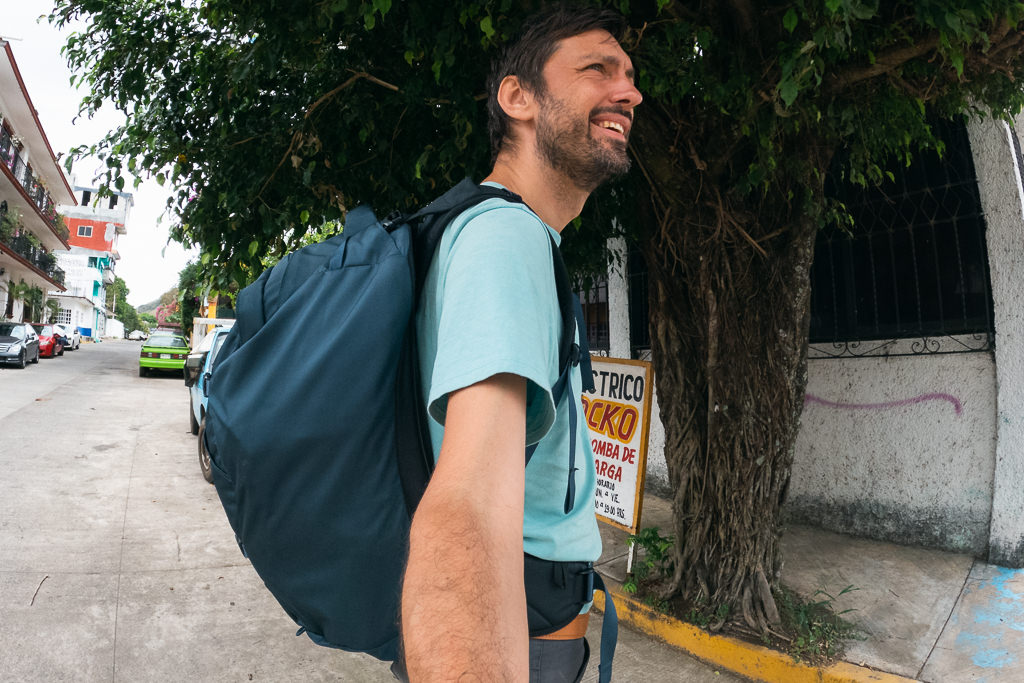
Farpoint 40 or 55?
I think a lot of travellers are torn between these two sizes as they are the most popular ones.
The good news is that the latest editions have reduced the differences between these two packs, making it a bit easier to choose.
There are still a lot of old reviews out there of the previous pre-2022 designs of the Farpoint 40 and Farpoint 55. You should simply ignore these! You can recognize the old Farpoint 55 by its narrower and taller look, whereas the new version’s main backpack looks similar to the Farpoint 40.
It used to be that the Farpoint 55 wasn’t carry-on compliant and it had some other points against it that made it a less attractive option, but now they are much more of a match.
However, let me still give you my 2 cents.
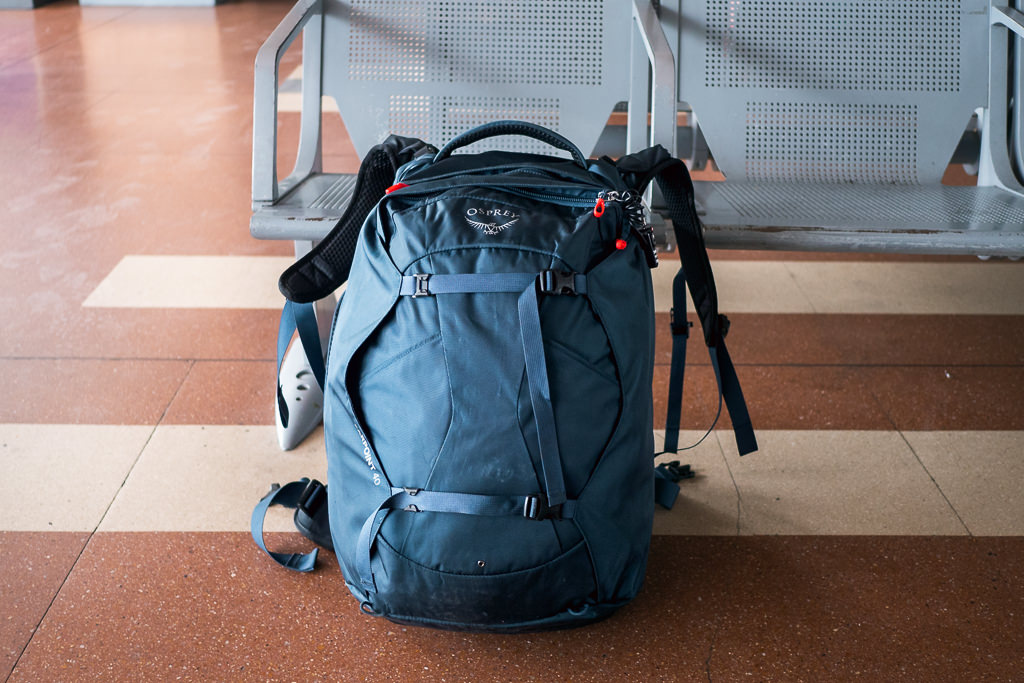
Differences in features
The newest Farpoint 55 is still a combination of a main pack with an included day pack. But the main pack is now carry-on size — in fact, it has the exact same dimensions as the Farpoint 40.
The Farpoint 55 main pack and Farpoint 40 are fairly similar overall, but they have some important differences:
| Farpoint / Fairview 55 | Farpoint / Fairview 40 |
| Includes Farpoint Daypack | No daypack (but can buy separately) |
| Internal mesh side pocket in main compartment | Doesn’t have this pocket |
| No laptop sleeve | Has laptop sleeve |
| No outer pouch (for water bottle etc.) | Has outer pouch |
| No top zipped compartment | Has top zipped compartment |
The reason the Farpoint 55 main pack lacks certain features is that it assumes you will use the included daypack for these things.
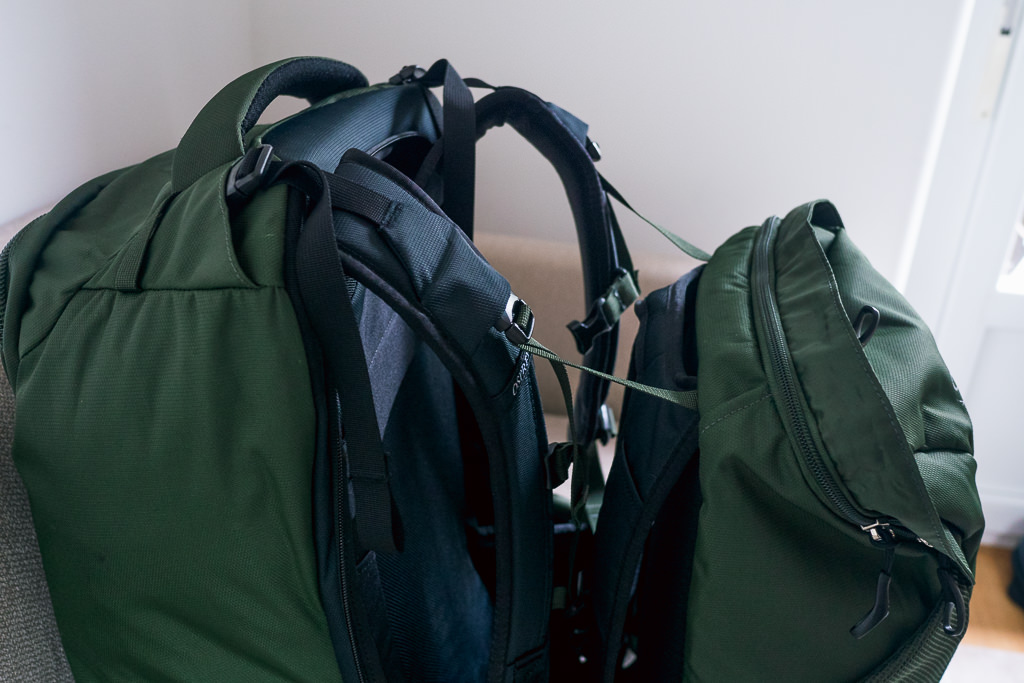
My buying advice
Although the Farpoint 55 has a cool two-in-one backpack system, I still think the Farpoint 40 is a better backpack overall.
The Farpoint 40 has a slightly less spacious main compartment, but it has everything else included, like a laptop sleeve and a quick access pocket on top. It really feels like a complete backpack that can stand on its own.
Saying that, you can still add any daypack you’d like. For example, I like to use the Farpoint 40 in combination with the Osprey Daylite Plus. Unlike with the Farpoint 55, they are not designed to work perfectly together, but you can still clip the daypack into the shoulder straps of the Farpoint 40 or tuck it behind the load straps on the back.
You can check out my comparison review video (skip to the section “How to combine FP40 & Daylite” to see what I mean).
But to be honest, I’ve rarely felt the need to combine the two packs. What I usually just do is travel with the Farpoint 40 (or any carry-on really) and carry a daypack by the handle, or ‘double strap’ it with the daypack in front of my body — at least for those short periods of time in transit where you might have to carry both at the same time.
One disadvantage of the Farpoint 55 is that the daypack is fairly basic. The back panel is very flat; that’s because it can then be neatly attached to the mothership backpack, but that also makes it a bit less comfortable. The daypack is also not very spacious inside. I didn’t find it big enough for my DSLR camera with an extra lens, for example.
As a basic daypack for keeping some snacks or a travel guide, it’s fine of course. But if you have specific requirements for your daypack, you may want to just buy the best daypack for you and use it in conjunction with a Farpoint 40.
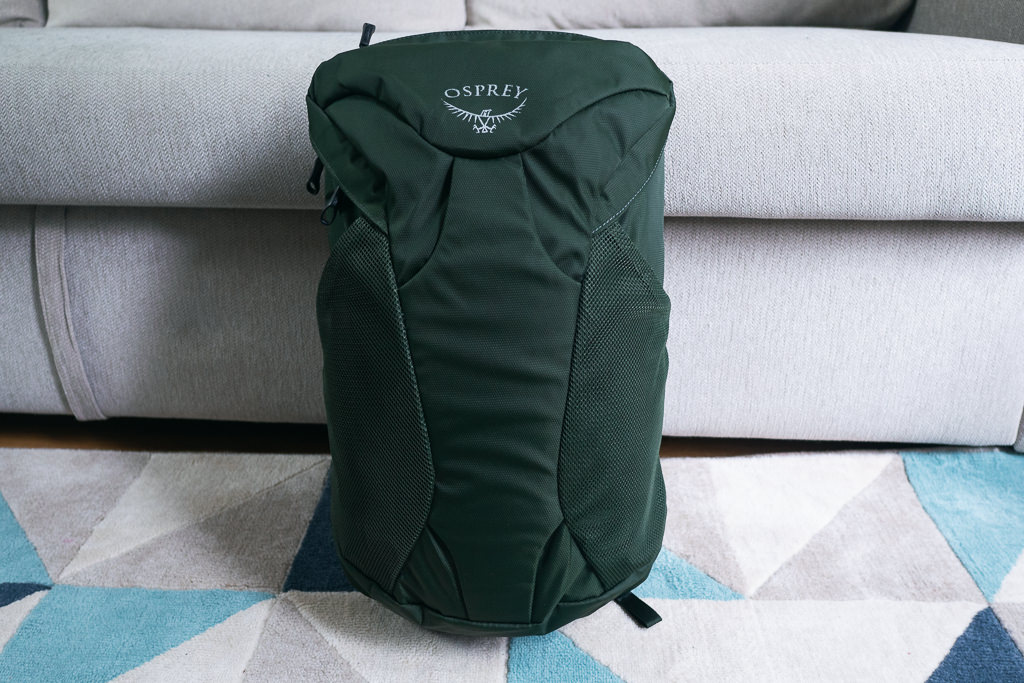
However, if you can make do with the simple daypack of the Farpoint 55, and you don’t mind that certain features have been moved from the main pack to the daypack, then the fact that they’re designed to work perfectly together could still make the Farpoint 55 a great choice. I don’t think there is really anything wrong with the Farpoint 55 overall.
Ignore the 70-liter versions, though. They’re way too big for general travel and there are better backpacks for more specific uses. For example, for camping or trekking trips, check out the Atmos 65 or the Farpoint Trek.
Alternative: the Farpoint Trek
The Farpoint Trek was added to the Farpoint line-up just a few years ago. It copies some trekking features from other Osprey backpack designs while still being a travel-focused backpack overall. It can be an interesting option for long-term travel or outdoors-focused trips.
I’ve had the chance to use it both as a general travel bag and while trekking (the longest was a 5-day trek).
The most important things to know are:
- The Farpoint 55 Trek is not only for trekking, but it’s definitely a lot more suitable for it than the other Farpoint editions. It’s much more comfortable, has better padding, and has an integrated rain cover.
- However, it isn’t carry-on size and doesn’t have a laptop compartment.
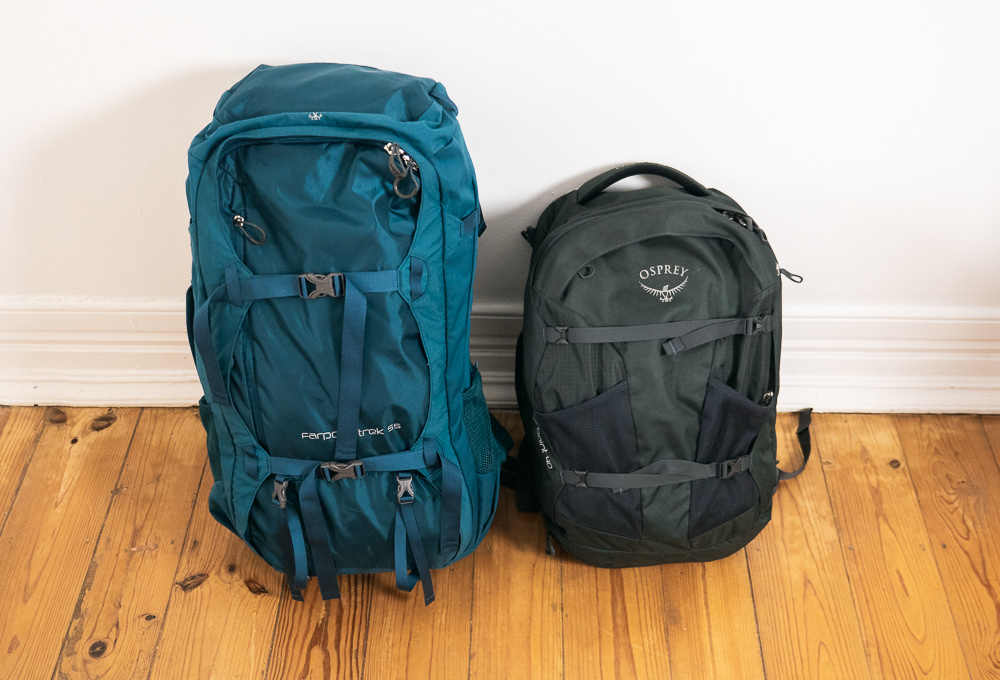
The Farpoint 55 Trek is ideal if you’re looking for a bag that you can use for travel and potentially for trekking as well.
It’s also the bag I would have loved to use during my round-the-world travels or my backpacking trips in Central- and South America. Even though it’s not carry-on compliant, it’s simply great for extended overland travel.
The extra 15 liters make it easier to pack for multiple climates for one trip, like packing for the tropical forests of Costa Rica and the cold mountains of the Andes. The harness is also much sturdier than the other Farpoints, making it much nicer to wear for longer periods of time. When I used it on a 5-day trek, I never had sore shoulders or a tired back.
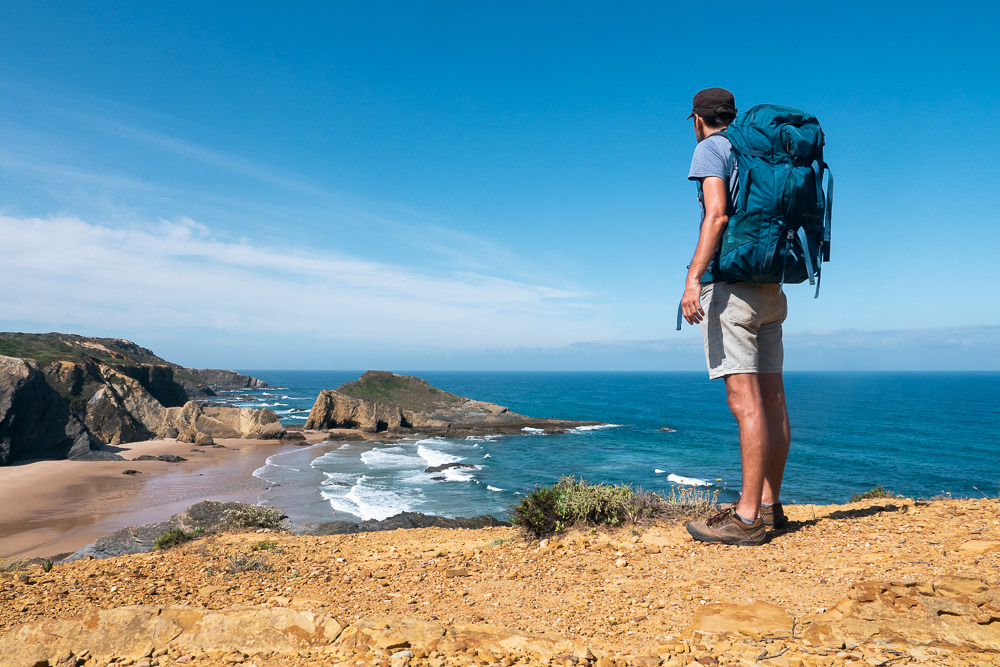
The Farpoint Trek used to be the only edition that has a fully adjustable suspension system. Nowadays the normal Farpoints can also be adjusted. However, the Farpoint Trek’s adjustment system is much more advanced, letting you adapt it to your torso height far more. If you are of non-average height (like me, I’m 6″5 or 194cm) then this is pretty awesome, as you’ll be able to adjust this pack exactly to your height requirements.
Osprey Fairview
The Farpoint series is technically unisex, but there is now also the Osprey Fairview 40. This is a women’s specific edition with some tweaks for extra comfort.
Since I am a dude I can’t speak from personal experience here, but many women travelers I’ve met have told me they love this edition.
What are the differences? Well, the Fairview 40 has slightly smaller dimensions, but has been made more comfortable as it is designed for the female body. Also, the shoulder straps curve along the body, creating a better fit-for-women design.
However, in terms of features and functionality, they are identical.
Some links may be affiliate links, meaning I may earn commission from products or services I recommend. For more, see site policies.
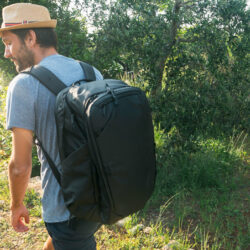
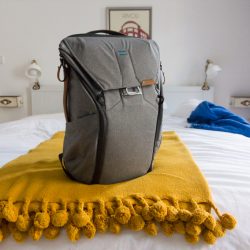



Hey Marek,
I really appreciate your reviews. Is the Farpoint 40 suitable for some trekking as well? Say, a three day trip to Europe of which two days are spent hiking?
TIA
I once did 3 days of hiking with the FP40 (about 5-6 hours a day) without complaints. It’s not really a trekking backpack, but it’s still pretty decent for it, as long as you don’t overpack.
Thanks so much Marek! I’d just like your opinion about the sizing of Farpoint 40 with your height at 6’4″. I’m of similar height and I feel farpoint 40 is a little too small for me even with the M/L size, i.e. when the hip belt on the the hip bone, the shoulder straps seem too far stretched down and not where they should be. Do you feel that at all? Or am I being too picky? Otherwise I’d really like to go for it. Thanks!
Hi Tam! The only issue I’ve experienced is that the hip belt is a little above my hip bone, though it’s not as obvious as with other brands I’ve tried. I’ve not really had issues with the shoulder straps with my length. I think the FP40 is basically 7.5/10 comfortable for me, the Trek is more like 9/10, but it’s also a lot bigger. I’d probably go by which size is best for your type of trips 🙂
Thanks for this review/comparison Merek. A year on do you have any further thoughts on the 55 Trek version? I’m similarly 6’5″ tall and need a versatile pack suitable for general travel in Europe and Asia, trekking the Camino, on and off trains, etc. I may be set on the 55 Trek plus a Daylite (for day trips and carry-on) without having to pack so minimalist to feel like I’m ill-prepared (or not have space for the wife’s overflow items). Thanks in advance,
Hey Mac! A year on my opinion is unchanged really. I think it’s an ideal backpack for what you are planning to go (travel but also trekking). 🙂
Thank you so much for this!! I have been going back ans forth between these two! Got the 55 less than a year ago and think I’m going to return it (had a 1-year return policy at REI in the states) and get the 40! I’m smaller and I think the 55 was just too long and I can always buy a better and bigger daypack. Thanks again! Your backpack reviews are the best!
Glad you found it helpful Alyssa!